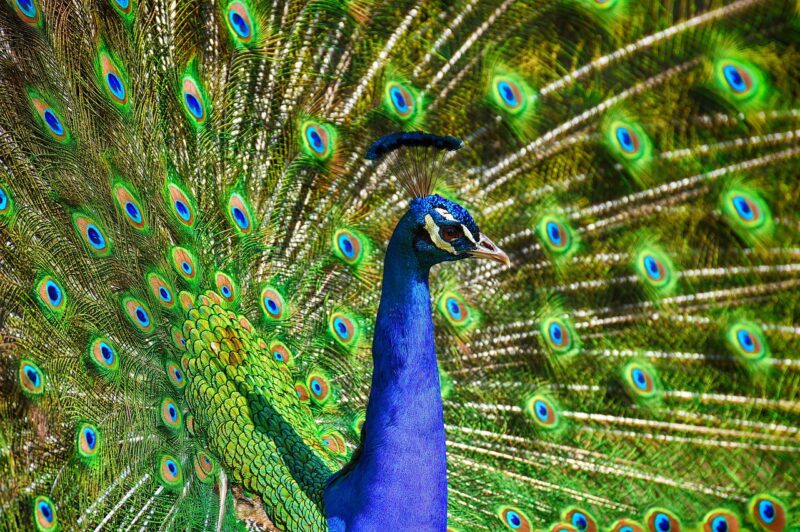How Zoos Care for Exotic Plants and Ensure Their Survival in Different Climates
November 12, 2024

Zoos have long been seen as a sanctuary for animals, but their roles in conserving plant life—especially exotic plants—are equally crucial and fascinating. With the globe’s ecosystems under increasing threat from climate change, habitat loss, and pollution, zoos are stepping up to ensure that unique plant species not only survive but thrive in different climates. In this article, we’ll delve into the methodologies and innovations that zoos employ to protect and nurture exotic plants, creating a sustainable future for them across diverse environments.
1. The Importance of Conserving Exotic Plants
Plants play a vital role in maintaining global biodiversity. They produce oxygen, store carbon, reduce soil erosion, and provide food and habitat for numerous species, including animals and humans. Exotic plants, which are non-native species typically found in different geographical locations, often face unique challenges:
- Climate Adaptation: Exotic plants may struggle to adapt to new climates, which can differ drastically from their natural environments.
- Invasive Species Threats: These plants can be threatened by invasive species that outcompete them for resources.
- Loss of Pollinators: In their new environments, they may lack the specific pollinators they need to reproduce effectively.
By conserving exotic plants, zoos not only contribute to maintaining biodiversity but also support wider conservation efforts. Plants often serve as critical habitats for various fauna, creating a complex web of life that sustains healthy ecosystems.
2. Methods for Caring for Exotic Plants in Zoos
Zoos employ a variety of innovative methods to care for exotic plants. These methods include:
a. Controlled Environments
Controlled environments, or botanical greenhouses, mimic the natural habitats of exotic plants. These glass structures regulate temperature, humidity, and light conditions tailored to each plant species’ needs.
Zoos utilize both traditional and advanced technologies:
- Hydroponics: Growing plants without soil reduces the risk of soil-borne diseases and allows for better nutrient management.
- Circular Irrigation Systems: These systems provide the specific water requirements without wasting resources, crucial for plant health and sustainability.
b. Propagation Techniques
Propagation is essential for maintaining healthy plant populations. Zoos practice various propagation methods to increase the number of individual plants.
Some common techniques include:
- Seed Germination: Ensuring that seeds are stored and germinated under optimal conditions to maximize growth potential.
- Cuttings and Grafting: These asexual propagation techniques create genetically identical plants and can help preserve delicate species that might be endangered in the wild.
c. Education and Research
Education plays a pivotal role in how zoos care for exotic plants. By educating the public and staff about plant conservation, zoos foster a community of informed supporters. Research is another critical aspect of plant care:
- Studying Adaptation: Understanding how different climatic conditions affect plant growth helps researchers develop strategies for enhancing resilience and adaptability.
- Collaboration with Botanical Gardens: Many zoos partner with botanical gardens and environmental organizations to share knowledge and resources for conservation efforts.
3. Ensuring Plant Survival Across Different Climates
To ensure the survival of exotic plants in different climates, zoos implement carefully planned strategies:
a. Climate-Specific Gardens
These gardens mimic various global climates, allowing staff to study how plants adapt over time. Zoos often feature themed gardens (e.g., tropical, desert, temperate) where plants can thrive in conditions close to their native habitats.
By rotating plants among these exhibitions, zoos can find out which species perform the best in different environments, encouraging adaptive resilience.
b. Genetic Conservation
Zoos prioritize preserving the genetic integrity of exotic plants through biobanking—collecting genetic samples of plant material for future growth. This ensures that the genetic diversity of species is maintained even if the plants succumb to disease or climate change.
Through this genetic research, zoos can:
- Develop Resilient Varieties: By cross-breeding and selecting traits, zoos develop plants that can thrive in varying climatic conditions.
- Restoration Projects: Zoos can reintroduce healthy, genetically diverse plants back into their original habitats, supporting ecosystem recovery efforts where necessary.
c. Collaboration with Global Conservation Efforts
Zoos play an integral role in global conservation initiatives. By participating in various programs, they share their findings and utilize collective knowledge to maximize the impact of plant conservation:
- Plant Conservation Partnerships: Collaborating with various organizations for knowledge exchange, sharing of best practices, and funding resources allows for enhanced plant care strategies.
- Community Engagement: Zoos encourage local communities to participate in conservation activities through outreach programs, fostering a culture of care for native and exotic plants alike.
4. Challenges Faced in Plant Conservation
Despite their successes, zoos face numerous challenges in exotic plant conservation:
a. Funding Limitations
Plant conservation efforts are often overshadowed by more visible animal care projects, leading to limited funding for botanical initiatives. Advocacy for better funding and raising awareness for the importance of plant life conservation are necessary.
b. Climate Change Impact
Plants are sensitive to climate changes, and shifts in temperature and precipitation can threaten their stability. Zoos need to stay attuned to environmental changes, modifying their strategies continuously to ensure plant health and survival.
c. Knowledge Gaps
The field of plant conservation is ever-evolving. To tackle this, zoos must invest in research to fill knowledge gaps regarding plant biology, ecology, and conservation methods.
5. Conclusion
The role zoos play in caring for exotic plants is not just an added bonus but a critical aspect of conservation that deserves recognition. Through innovative techniques in plant care, preservation, and collaboration with global initiatives, zoos are rising to the challenge of ensuring the survival of exotic plant species in fluctuating climates.
As we face a future where ecosystems are increasingly threatened, it’s vital that more institutions expand their focus to include plant conservation. Zoos are paving the way for this critical work, ultimately aiming to foster resilience in both flora and fauna to secure a sustainable future for our planet’s rich biodiversity.








